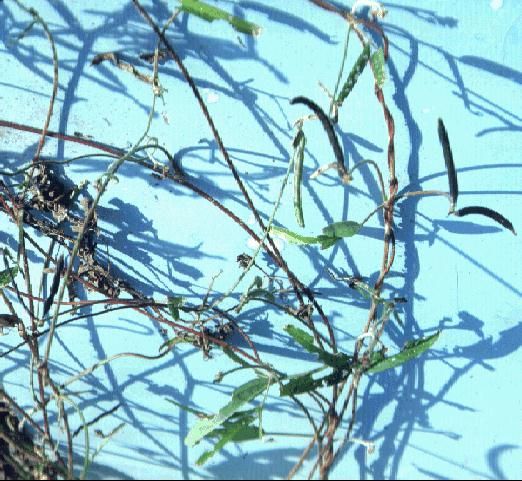Bean, Wild Mung—Vigna vexillata (L.) A. Rich1
This plant has many scientific names. In trials at Gainesville in 1984 it resembled a plant somewhere between a Southern pea and a mung bean. The long trailing vines have narrow, pointed, bean-like leaves. Pods and seeds resemble mung beans, and the roots are nodulated.
Use
Because of its tuberous roots rather than its pods, the wild mung is held in fairly high esteem in some parts of the world. In Africa, the roots are eaten in times of severe hunger. It grows wild in the Himalayas and in the foothills of India. The tubers are soft, easy to peel, and possess a creamy, white, tasty interior. They are eaten boiled or raw. Protein content of the tubers is near the 15% level, which is high compared to the 1–7% for potatoes and yams.

Credit: James M. Stephens
Culture
In Florida trials, only the production of the pods and seeds was observed. Very little has been reported on the edibility of the seeds. At Gainesville, it was seeded about September 1 and produced pods through November and December. Culture was similar to that used for most garden vegetables.


